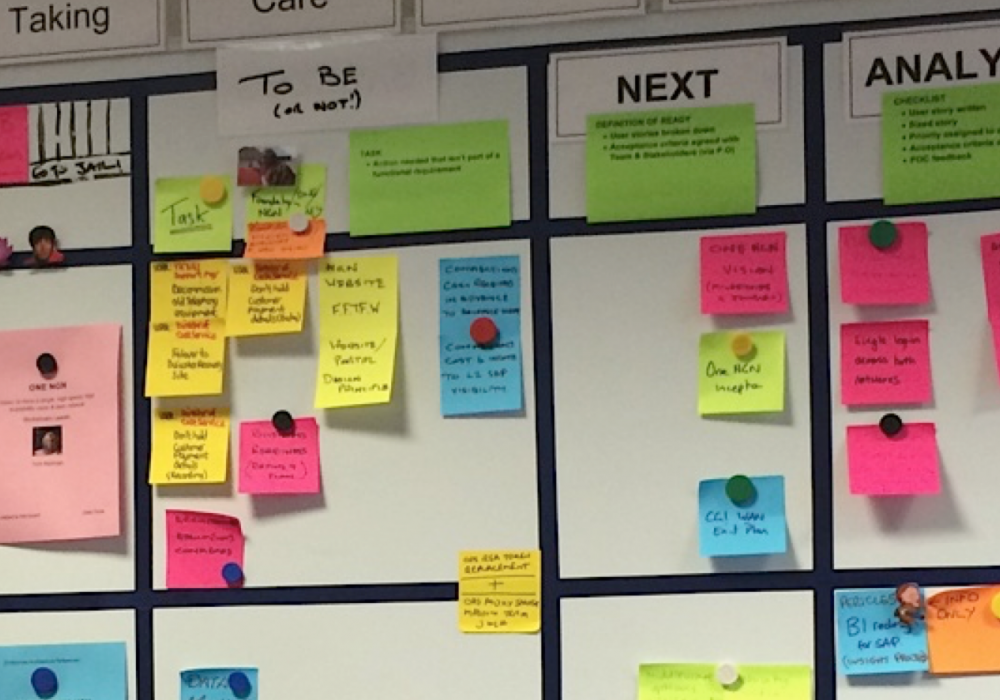It’s about time I posted the notes I email to people who ask about facilitating Featureban, so here goes…
Here’s a link to the latest powerpoint: (withheld – I’m happy to share but do please email me for this)
You might find it helpful to take a look at the slideshare embedded in Are we there yet?. You’ll notice a bonus round 4 there that’s not in the standard deck. Take advantage of the Creative Commons licensing and make your own customisations! The checklists shown in the deck are now available via Agendashift in the Values-based Delivery assessment template, the basis for the Depth of Kanbanland 2015 survey.
Time priorities depend very much on needs, goals and audience. Typically I do either:
- Rounds 1 and 2 and a “here’s one I prepared earlier” on round 3, plus lots of time for Q&A on all things Kanban and Agile (the sessions I’m running at my current client are positioned as Agile training)
- All three rounds with a few minutes debrief for each
In the last meetup I did, I achieved #1 above in about 75 minutes. Your mileage may vary. The job of the debrief is to let people make the connection with the workplace.
I make a point of comparing the rules of round 1 and round 2; everyone should agree before playing round 2 that the only change is the WIP limit. I’m careful not to use the word “collaboration” until participants make the key observation that it improves significantly in round 2.
Stop round 1 as soon as most teams have delivered a couple of items. Most teams will have lots of WIP in the 2nd column. DO NOT reset boards between rounds 1 & 2. Advise teams to hold replenishment events when their backlogs become depleted. In later rounds, they might reuse “done” tickets to save time.
A WIP limit of 3 in round 2 works well. The fact that it is imposed by the facilitator rather than proposed by the team can be discussed later when you get to “improve experimentally, evolve collaboratively” (CP6) in the debrief.
One other tip I’ve heard from a couple of other facilitators: the atmosphere and interaction around the game is improved if the board is mounted vertically (eg using a flipchart). It means there’s less time staring down at a table!


